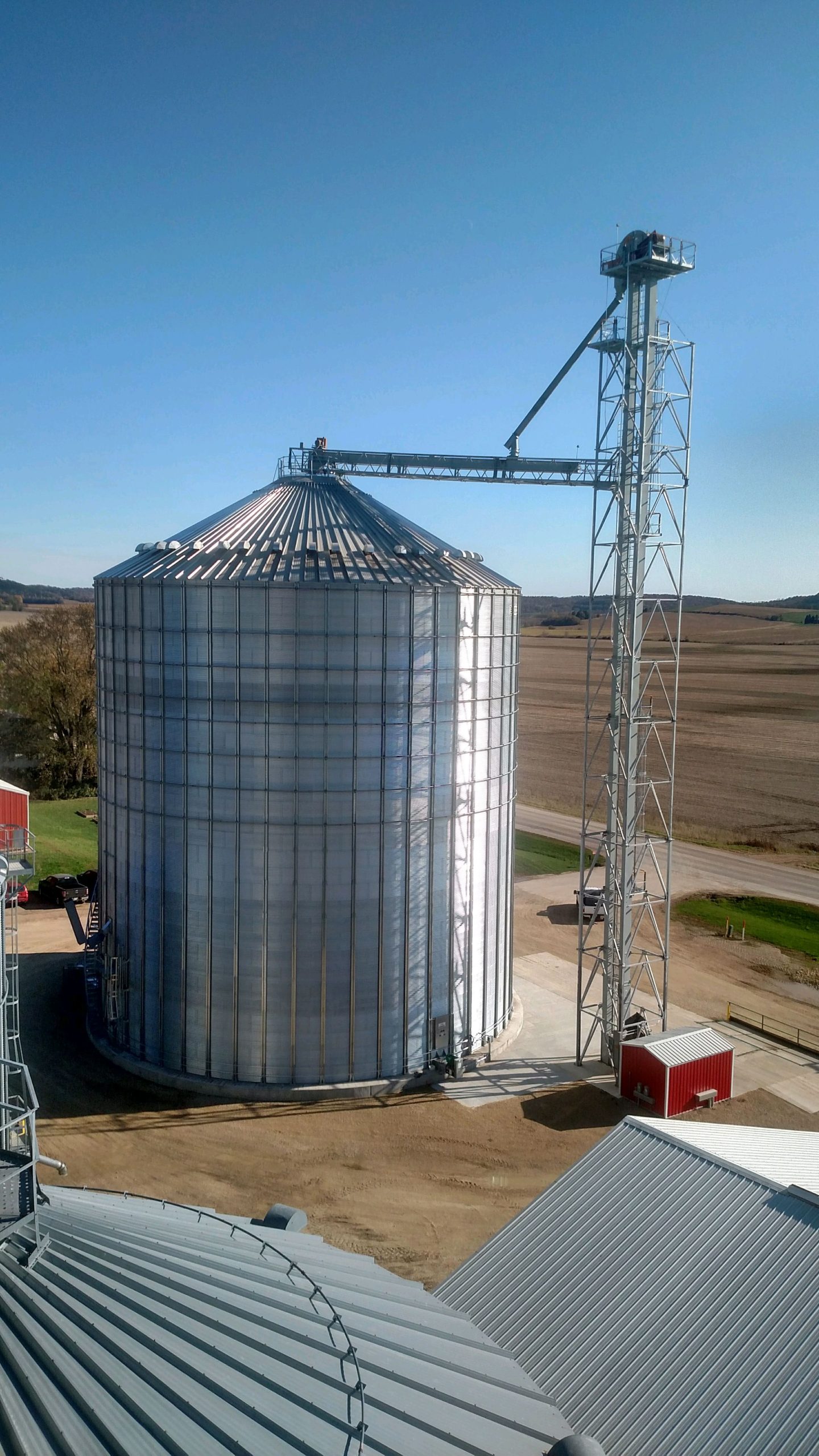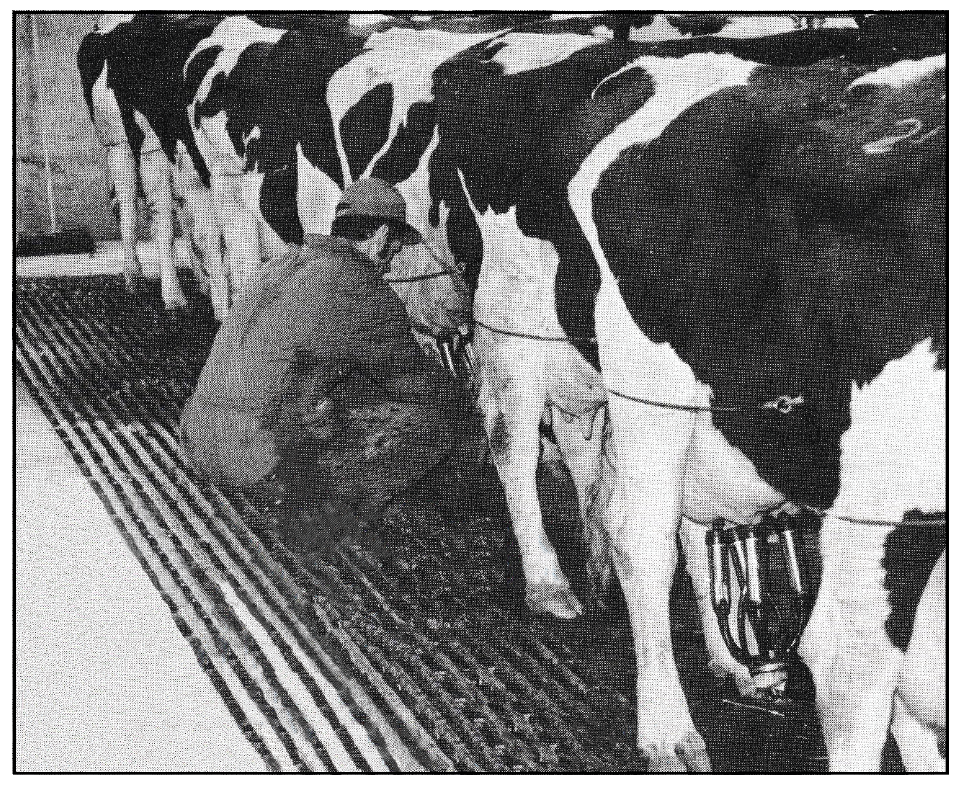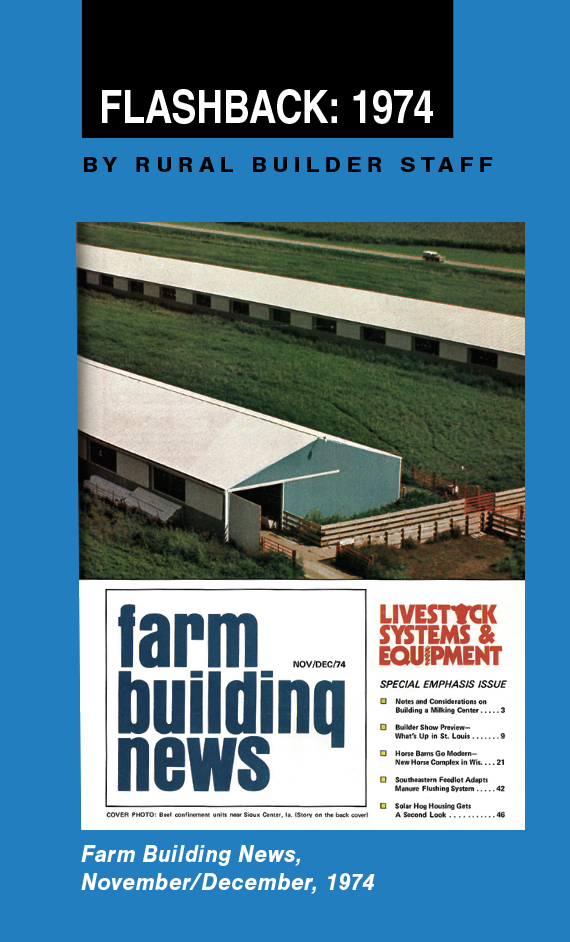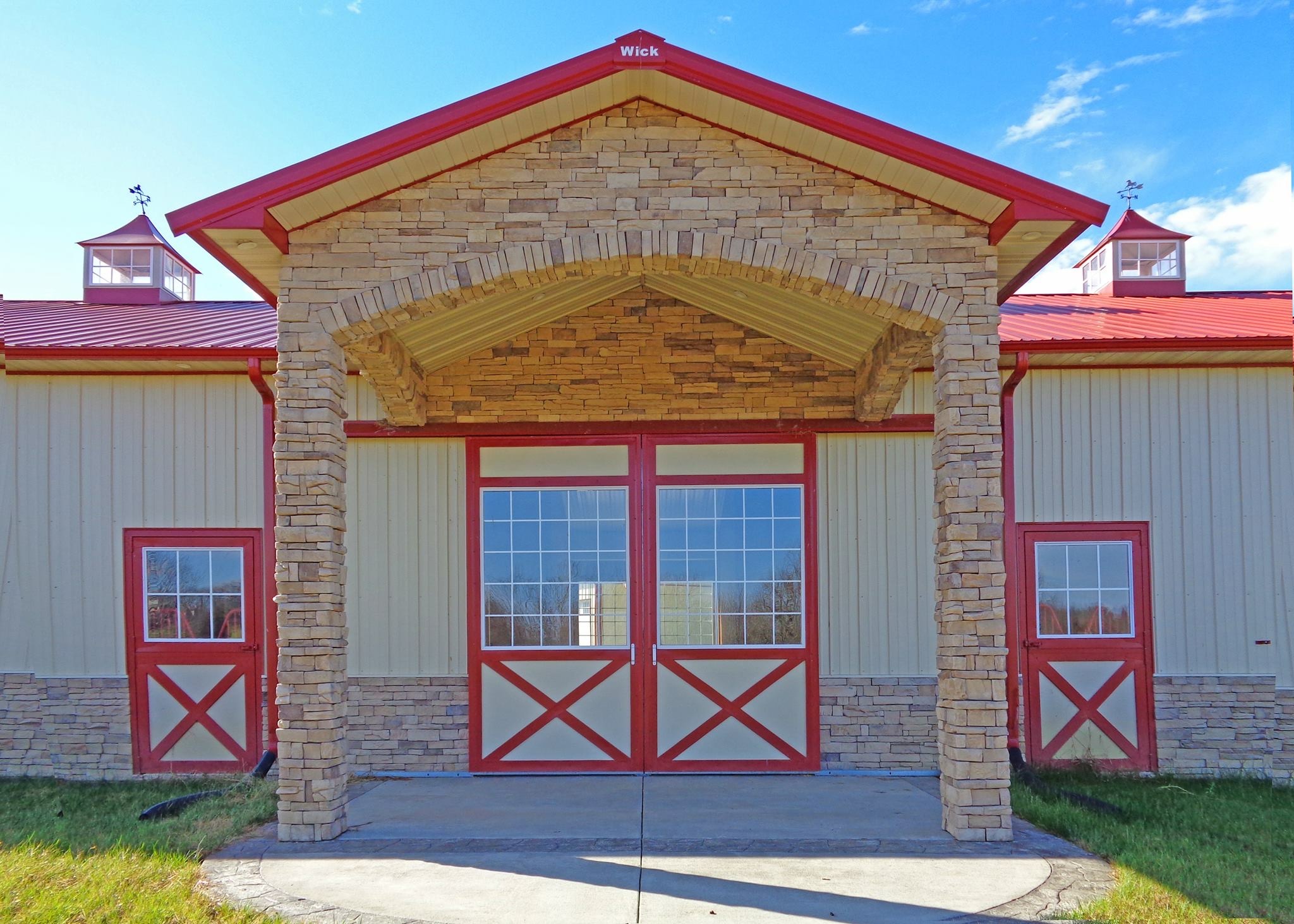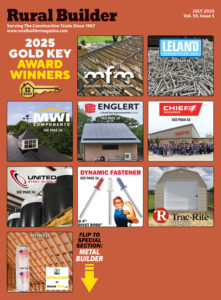By Clayton & Lambert
Bin builders can pass on to their farmer-customers some practical ideas for lengthening the useful life of on-farm storage facilities.

From Clayton & Lambert, veterans in the business, here are some sound recommendations:
•With good treatment, the average life of a galvanized steel grain bin is about 30 years. Farmers have sometimes extended this durability 20 more years by a yearly application of raw linseed oil to the bin’s interior walls.
• To compensate for less capacity in bins with drying floors, bins with steep slope roofs will hold more grain, and a center fill type will allow more even filling. In the drying floor, insist on heavy-duty galvanized steel with a perforated design that maximizes air penetration without grain leaking or plugging.
•Where expanded capacity is needed, but not enough to warrant the purchase of an additional bin, investigate the “add-a-ring” feature offered by some manufacturers. Here, one or more full circles of extra steel side wall can be added to the bottom of existing bins.
•In high moisture storage, use a sweep-action grain tender if farmer wishes to keep stored grain level, to break up chunks and prevent clogging of the unloader. Sometimes, use of a stirring device can cause extra stresses on the walls and floor of a drying bin.
Be sure floor supports and sidewall stiffeners are adequate.
•After grain is dried to a safe moisture level for prolonged storage, it is still essential to aerate the grain to prevent convection air currents and resulting moisture migration, which will spoil it. For safe storage, grain should be kept at a uniform temperature from center to outside, and as cool as possible.

Aeration is not necessary when the grain mass gets uniformly down to 40°F, but the aeration fan (or the drying fan on a dryer) must be run if you suspect hot spots or moisture migration
•Although leaks seldom occur in high moisture bins if the structure is erected, used and cared for properly, they can be caused by two practices: putting in material with a moisture content of over 65%, and clogging of the top breather valve.
This valve must be kept free of debris so that it can open or shut as differences in interior and exterior pressure require. It’s advisable to check the valve occasionally to verify that it’s functioning correctly. At least once a year, when a tank is empty or nearly so, the bottom doors should be left open to facilitate a complete drying-out.
Grain Bin Advice Today
By Linda Schmid
The preceding grain bin tips were published in 1975, and they were good advice, but some things have changed in the industry.
While everyone wants to make the most of grain bin capacity, it is important not to over-fill according to Jay Carpenter, a 40-year veteran of the grain bin industry. Grain bin roofs are built to handle snow loads, not pressure from the inside pushing up. Therefore, grain pressure can damage them, so don’t overfill a grain bin. Also, be careful that the load is not off-center to avoid uneven pressure.
High moisture in grain storage can be problematic. Handling moisture is not just about keeping the grain from rotting. If moisture is left in the bin for too long, it will corrode Galvalume bins. Therefore, the fans need to run long enough to make sure the grain is cool and the moisture is off the walls. For example, if it takes three days for the corn to cool, it will likely take another day or two of aeration to ensure that there is no trapped moisture. Further, once you have a spot in the bin where molding has begun, you can’t keep the fans running long enough.
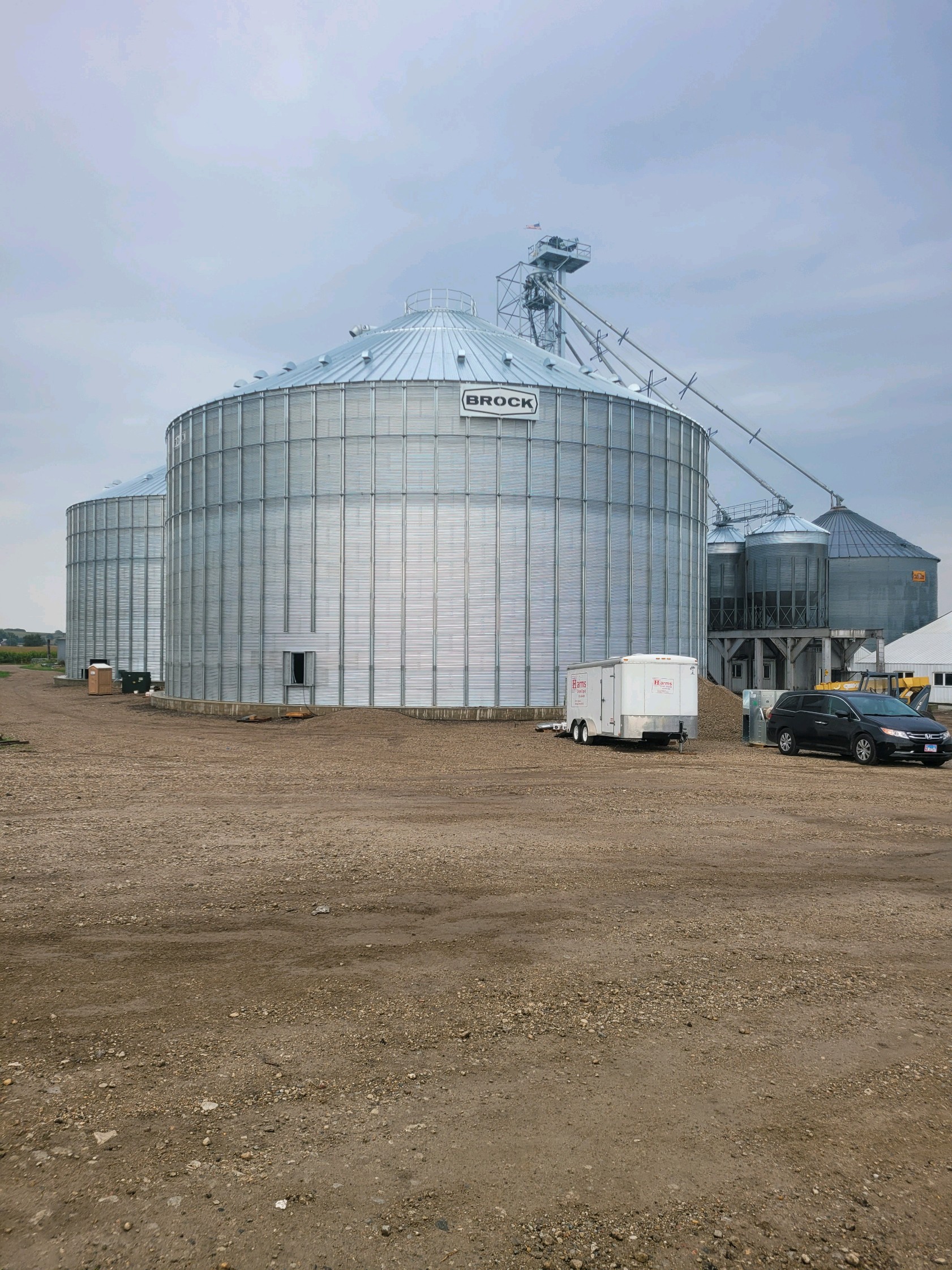
Movement of grain is hard on a storage bin. This is why some farmers use “working bins” and storage bins. Working bins are drying bins or surge bins, and surge bins feed the dryer bins. However, this method of drying is less common now. Most grain bins are vented to handle moisture. Further, the manufacturer may have specific instructions regarding high moisture grain storage.
Finally, many storage bins are destroyed because they were not properly anchored. In high winds, a few anchors can come loose, thereby placing more stress on the remaining anchors. Then when all the anchors on the bin give way and the bin blows off its foundation, it is likely to bang into the next bin, breaking that one loose. The domino effect can take over and many bins can be lost in one storm.
Proper anchoring can help to avoid losing bins to storms. Ensure that the recommended number of anchors are used. Embed the concrete anchor 8 to 10”, not just 3 to 4”. A little extra time and money can avoid a lot of devastation.
RB


